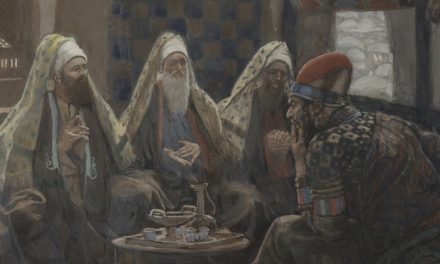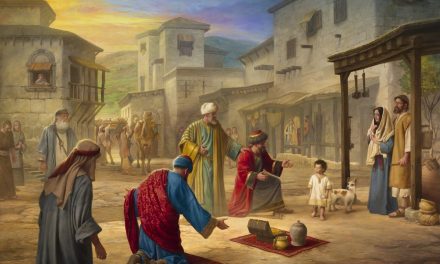
The stable: The stable where Jesus was born would not have been made of wood. Wood is rare and precious in Israel and was only used for expensive things. The area is dotted with limestone caves and hollows where sheep can be folded in for the night.
The Real Story of Christmas
In the United States, we have a Christmas story that is pretty standard and mostly untrue.
Sometimes we do see articles that give us some corrections, but they fall short of the whole picture (if it’s possible to get the whole picture). Here are some facts that can help you imagine the birth of Christ in its time and setting.
The year: Because the death of Herod the Great is pretty certainly placed at 4 B.C., the birth of Christ has been approximated to have happened before Herod’s death.
The star: Exciting things happened in the heavens in 5 B.C. Matthew described a star that quickly appeared and slowly moved across the night sky, then seemed to “stand” over Bethlehem. There was a sequence of heavenly events that the wise men would have noticed, and perhaps even the shepherds.
In 7 B.C., the triple conjunction of Jupiter and Saturn; in 6 B.C., Saturn, Jupiter, and Mars combined in the sky; then in 5 B.C., the Star of Bethlehem appeared. This was a comet that came into view in the constellation of Capricorn, an event that was recorded by Chinese astronomers. (For scholarly proof, follow this link.)
The season: With the evidence of the star, Christ would have been born between March 9th and May 4th. Passover in early April is the most apropos week for several reasons:
- The symbolism–The Jewish high holiday focuses on the sacrificial lamb, which typifies Christ.
- The crowds–There was no room in the inn (guest house) because many thousands of pilgrims had arrived in Jerusalem for the feast. Bethlehem is just a few miles from Jerusalem.
- The census–Passover was the major feast of the year with more Jews arriving than for any holiday pilgrimage feast. The Romans counted the number of lambs sacrificed in the temple and multiplied by 10 to approximate the number of Jews in the empire. It was the perfect time for a census.
- Mary–Women were not required to attend any of these feasts because of their duties at home, but Mary was extremely devout. (In the Bible we see her making pilgrimage for the Passover when Jesus was 12.) Joseph may have tried to talk her out of accompanying him to Jerusalem and Bethlehem because she was “heavy with child.” Her time to give birth arrived during the pilgrimage.
The stable: The stable would not have been made of wood. Wood is rare and precious in Israel and was only used for expensive things. The area is dotted with limestone caves and hollows where sheep can be folded in for the night.
The manger: A manger holds food (hay) for cattle (like sheep) to eat. But this one would have been made of stone.
Swaddling clothes: These were a long strip of woven cloth that may have had decorative marks or embroidery to identify the tribe and lineage of a welcome child.
The wise men: These men (we don’t know how many) were learned and probably either Jews or believers in Zoroastrianism from Babylon or somewhere else in Persia. (See this article on the wise men.) They arrived when Joseph and Mary had moved from the stable into a house. The comet was visible for 70 days, and they had the scriptural prophecies that the Messiah would be born in Bethlehem.
Frankincense and Myrrh: Both of these precious things are pebble-like collections of sap. Frankincense is used today in many candle scents and men’s colognes. It was used in the temple incense in Jesus’ time, and so was myrrh, but myrrh was also used in preparing the dead.
So, the final picture: Mary and Joseph made their way to Jerusalem on roads crowded with pilgrims. It was early April and the Passover Feast pilgrimage. They went to Bethlehem to be registered with other descendants of David. The comet in the heavens must have a sensation for everyone, but some saw it as a sign from God. Mary went into labor, so instead of setting up a tent, they sought shelter in a guest house, but there was no room. They sought protection in a limestone hollow used as an animal shelter and placed the baby Jesus in a stone manger. There may have been women who helped to deliver Jesus, which was the practice in those days.





